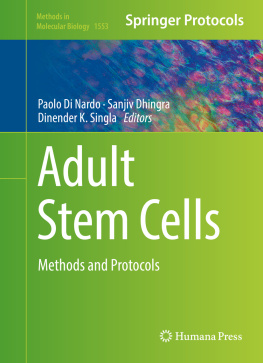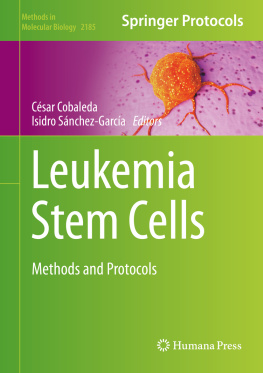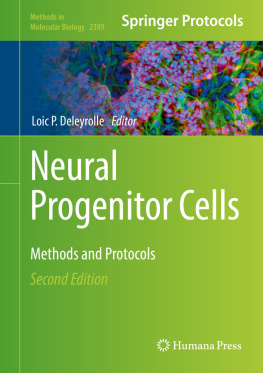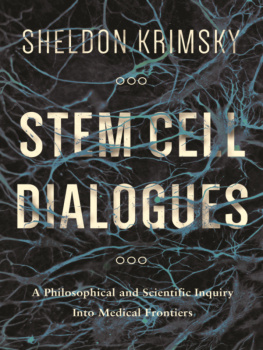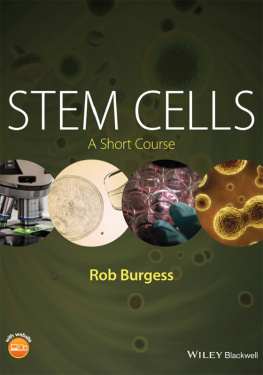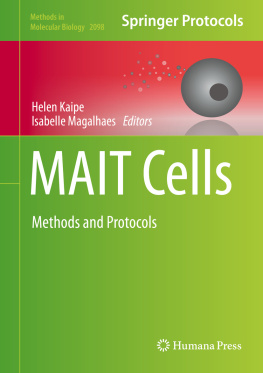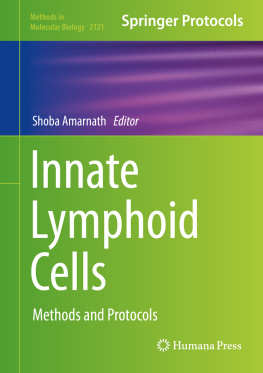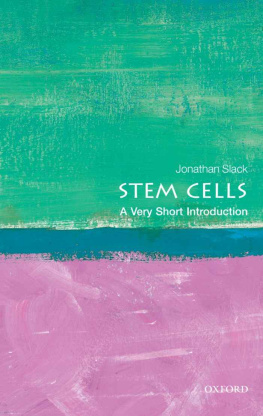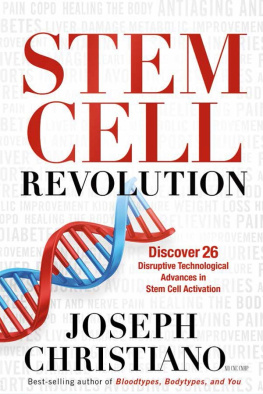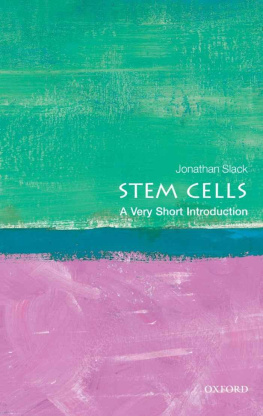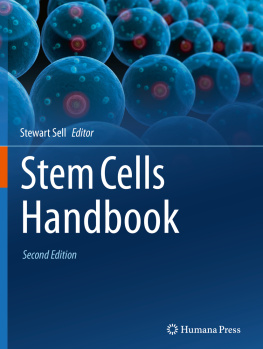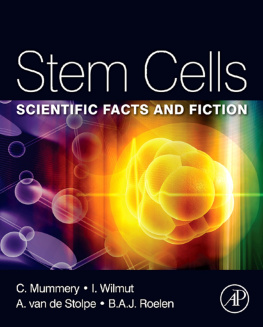Dhingra Sanjiv - Adult Stem Cells: Methods and Protocols
Here you can read online Dhingra Sanjiv - Adult Stem Cells: Methods and Protocols full text of the book (entire story) in english for free. Download pdf and epub, get meaning, cover and reviews about this ebook. City: New York;NY, year: 2017, publisher: Springer;Humana Press, genre: Home and family. Description of the work, (preface) as well as reviews are available. Best literature library LitArk.com created for fans of good reading and offers a wide selection of genres:
Romance novel
Science fiction
Adventure
Detective
Science
History
Home and family
Prose
Art
Politics
Computer
Non-fiction
Religion
Business
Children
Humor
Choose a favorite category and find really read worthwhile books. Enjoy immersion in the world of imagination, feel the emotions of the characters or learn something new for yourself, make an fascinating discovery.
- Book:Adult Stem Cells: Methods and Protocols
- Author:
- Publisher:Springer;Humana Press
- Genre:
- Year:2017
- City:New York;NY
- Rating:5 / 5
- Favourites:Add to favourites
- Your mark:
- 100
- 1
- 2
- 3
- 4
- 5
Adult Stem Cells: Methods and Protocols: summary, description and annotation
We offer to read an annotation, description, summary or preface (depends on what the author of the book "Adult Stem Cells: Methods and Protocols" wrote himself). If you haven't found the necessary information about the book — write in the comments, we will try to find it.
Adult Stem Cells: Methods and Protocols — read online for free the complete book (whole text) full work
Below is the text of the book, divided by pages. System saving the place of the last page read, allows you to conveniently read the book "Adult Stem Cells: Methods and Protocols" online for free, without having to search again every time where you left off. Put a bookmark, and you can go to the page where you finished reading at any time.
Font size:
Interval:
Bookmark:
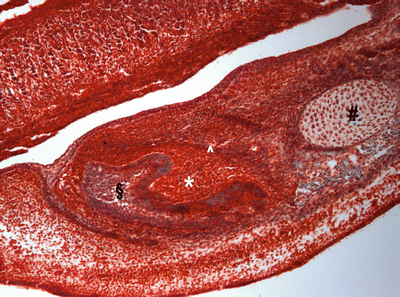
- Phosphate buffered saline solution, pH 7.4.
- Dulbeccos Phosphate Buffered Saline Modified, without calcium chloride and magnesium chloride.
- Penicillin G (200 U/mL), Gentamicin sulphate (80 mg/mL) and 5 mg/mL Amphotericin B.
- Collagenase/Dispase solution: 3 mg/mL collagenase type I and 4 mg/mL dispase II.
- RPMI-1640 medium.
- Fetal calf serum.
- Trypsin/EDTA solution.
- Dimethyl sulfoxide.
- Paraformaldehyde.
- Toluidine Blue solution .
- Trypan Blue solution.
- TRI Reagent solution (Sigma-Aldrich, Saint Louis, USA).
- Chloroform.
- Isopropyl alcohol.
- Ethanol absolute, 99.8 %.
- Deoxyribonuclease I kit (Fermentas International, Inc., Burlington, Canada).
- RevertAid RT Reverse Transcription Kit (Fermentas International).
- 10 PCR Buffer II (Roche Applied Science, Indianapolis, USA).
- 25 mM MgCl2 (Fermentas International).
- 10 mM dNTP (Fermentas International).
- Specific 10 mM primer (Sigma-Genosys).
- Taq DNA Polymerase, recombinant (Fermentas International).
- Triton X-100.
- Fluoroshield Mounting Medium With DAPI (Abcam, Cambridge, UK).
- Bovine serum albumin.
- Sodium azide (NaN3).
- Facs buffer, PBS, 0.51 % BSA or 510 % FCS, 0.1 % NaN3.
- Adipogenic inductive medium; RPMI 1640 supplemented with 10 % (v/v) FCS, 1.7 mM insulin, 1 mM dexamethasone, and 0.5 mM methylisobutylxanthine, 100 U/mL penicillin G, 40 mg/mL gentamicin sulfate, and 2.5 mg/mL amphotericin B (Sigma-Aldrich).
- Nile red staining solution.
- Fluorescence Mounting Medium.
- Osteogenic inductive medium; RPMI 1640 supplemented with 10 % (v/v) FCS, 10 mM b-glycerophosphate, 0.05 mM ascorbic acid, and 100 nM dexamethasone, 100 U/mL penicillin G, 40 mg/mL gentamicin sulfate, and 2.5 mg/mL amphotericin B (Sigma-Aldrich).
- Alkaline phosphatase staining kit (BioOptica Milano SpA, Milano, Italy).
- Chondrogenic inductive medium ; RPMI 1640 supplemented with 10 % (v/v) FCS, 10 ng/mL TGF-3, 0.025 mM ascorbic acid, and 100 nM dexamethasone, 100 U/mL penicillin G, 40 mg/mL gentamicin sulfate, and 2.5 mg/mL amphotericin B (Sigma-Aldrich).
- -Mercaptoethanol.
- Retinoic acid.
- Neuroglial inductive medium; RPMI 1640 supplemented with 10 % (v/v) FCS and 5 ng/mL platelet-derived growth factor, 10 ng/mL basic fibroblast growth factor, 252 ng/mL glial growth factor, and 14 mM forskolin (Sigma-Aldrich).
- Antiboby against Neuron growth-associated protein 43 (GAP43) (Santa Cruz Biotechnology, Santa Cruz, CA).
- Antiboby against Glial fibrillary acidic protein (GFAP) (DakoCytomation, Dako Italia SpA, Milano, Italy).
Font size:
Interval:
Bookmark:
Similar books «Adult Stem Cells: Methods and Protocols»
Look at similar books to Adult Stem Cells: Methods and Protocols. We have selected literature similar in name and meaning in the hope of providing readers with more options to find new, interesting, not yet read works.
Discussion, reviews of the book Adult Stem Cells: Methods and Protocols and just readers' own opinions. Leave your comments, write what you think about the work, its meaning or the main characters. Specify what exactly you liked and what you didn't like, and why you think so.

